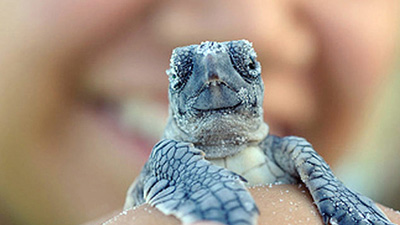 There are actually five species of sea turtle that live on AMI, with the most common being the Loggerhead (pictured). Sea turtles are protected by both the Federal Endangered Species Act and the Florida Marine Protection Act and because of that there are specific guidelines to know before heading out to the beach.
There are actually five species of sea turtle that live on AMI, with the most common being the Loggerhead (pictured). Sea turtles are protected by both the Federal Endangered Species Act and the Florida Marine Protection Act and because of that there are specific guidelines to know before heading out to the beach.
- Observe nesting turtles from a distance — from at least 100 feet. Do not disturb sea turtles, hatchlings or their nests. If you see anyone disturbing a nest or harassing a turtle, immediately contact the Florida Fish and Wildlife Conservation Commission at 888-404-FWCC.
- Do not touch sea turtles. If you believe an adult sea turtle or its hatchling is disoriented or heading in the wrong direction, immediately contact Anna Maria Island Turtle Watch & Shorebird Monitoring at 941-778-5638.
- Do not use fishing lights, or flash lights, on the beach at night.
- Do not aim camera flashes, including from your cell phone, when taking photos of a sea turtle.
- Do not release fireworks, helium balloons or sky lanterns from the beach; the debris is dangerous to sea turtles, as well as birds and other wildlife.
- If you stay on or near the beach, please turn off outside patio lights or shield indoor lights from shining directly on to the beach at night. Lights can disturb adult sea turtles and their hatchlings.
- If you see a mother turtle coming onshore, give her complete right-of-way. Remain as far away and quiet as possible.
- After enjoying our beautiful beaches, please remember to take your trash and personal belongings with you when you leave. It is also important not to leave behind any beach toys, furniture, or sun tents as no beach items are to be left on the beach after the sunset.
View more on the AMITW & Shorebird Monitoring organization»





